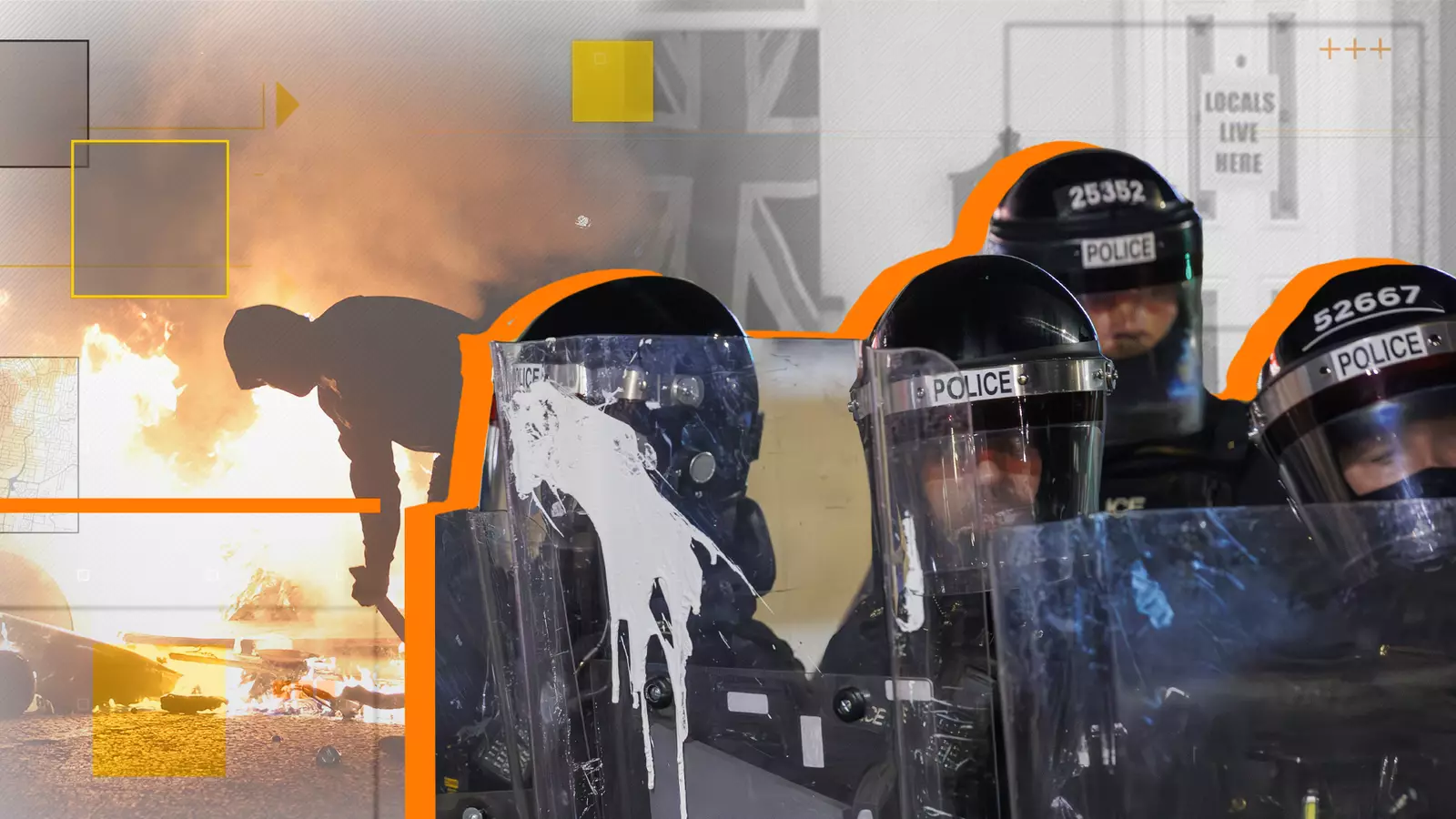The streets of Ballymena, a once placid town in Northern Ireland, have transformed into a battleground over the past week, following a grievous incident involving the sexual assault of a teenage girl. The incident has ignited a volatile mixture of outrage, fear, and resentment that serves as a reflection of deeper societal rifts. Initially classified as a peaceful protest, the gatherings quickly devolved into violent riots. The crisis spotlights the complex relationships between local community tensions, demographic changes, and the emerging far-right narratives that engulf not just Ballymena, but wider Northern Ireland as a whole.
As the violence erupted, two 14-year-old boys were charged, their pleas translated through a Romanian interpreter, starkly raising the question of how immigration shapes local dynamics. However, the tragedy of the assault shifted the focus from the victim and her suffering to a brewing storm of xenophobia that seems to have taken root in the community. What started as a legitimate expression of sorrow morphed into an unfounded quest for scapegoats—the result of lingering tensions exacerbated by demographic shifts.
Social Media: The Fuel to the Fire
The role of social media in this crisis cannot be overstated. In the days leading up to the unrest, a dramatic spike in online discussions about Ballymena was noted. One day before the assault, anti-immigrant sentiments were already spreading across platforms like X, previously Twitter, with discussions reaching a staggering 78,300 mentions in just one day. This media frenzy transformed a localized incident into a national focal point for an escalating narrative fueled by fear and misunderstanding.
Far-right groups quickly seized upon the opportunity, amplifying harmful sentiments and crystallizing the climate of fear. The influence of notable figures like Tommy Robinson cannot be dismissed; his numerous posts on social media reached millions, further entrenching divisive ideologies. Their messaging created an echo chamber of resentment wherein community fears are legitimized and granted a pseudo-political voice, while simultaneously sidelining the pressing issues at hand: sexual violence and community safety.
Demographic Transformations: A Ticking Time Bomb
Ballymena’s demographic shifts in recent years present a complex backdrop to the ongoing violence. According to census data, the town has witnessed a rapid change since 2011, with an astounding proportion of the population now speaking languages other than English or Irish. One in eight residents speaks Romanian, reflecting a broader trend that raises questions about integration and social cohesion. As more newcomers, particularly from Eastern Europe, settle in this small town, a palpable anxiety within the local populace has emerged, often leading to discriminatory reactions.
Perhaps the most troubling aspect of this demographic evolution is the aggressive rhetoric against immigrants—rhetoric that seems to be rapidly gaining traction. Instead of fostering an atmosphere of inclusion and understanding, the fear of the “other” has been materialized into hostile protests, with slogans like “British household” and “Locals live here” serving as stark reminders of how the narrative can shift from protection of community to exclusionary nationalism.
The Role of Political Narrative
As unsettling as it is, the currents of unrest in Ballymena reveal how political language can inadvertently legitimize violence. Politicians, like Jim Allister, have expressed concern over immigration without adequately addressing the underlying problems of violence and its repercussions on vulnerable communities. While it is crucial to acknowledge legitimate concerns over immigration, falling into a pattern of blame rather than focusing on systemic issues creates an environment that fosters unrest and alienation.
The predominant narrative put forth by local politicians seems to misinterpret community dissent as merely racist, thereby undermining the nuanced feelings that drive these chaotic expressions. This oversimplification only serves to further ignite tensions, as those in the community feel misunderstood and vilified for their emotions and fears.
A Community in Conflict
The ongoing violence serves not only as a reflection of physical conflict but also of a community deeply at odds with itself. Locals report feeling terrified in their own neighborhoods, as the clashes have made once-safe spaces into zones of fear. The intensification of police responses, including rubber bullets and water cannons, may quell immediate unrest but risks inflaming an already charged atmosphere.
The repercussions from this chaos are multifaceted, leaving a lasting impact on community relationships and mental health. The conversations surrounding this crisis must shift from focusing solely on violence and blame to genuine discussions about understanding, safety, and the coexistence of diverse communities. Only then can Ballymena begin to heal from the wounds of recent turmoil and truly consider its identity in a growing multicultural landscape.


Leave a Reply